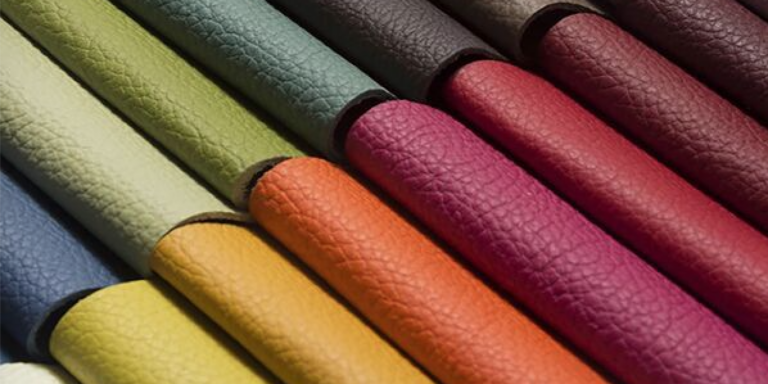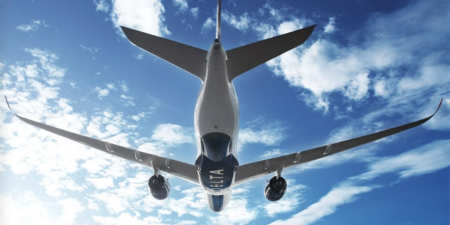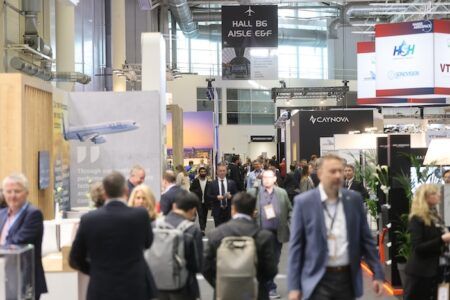When we think of materials, what is the first thing that comes to mind? Is it the cotton and wool that’s keeping you warm, or the nylon that’s light and versatile? The variety of materials that humans have created – from the dried animal hides of the past, to the engineered, innovative materials of today – remind us how far the material industry has come. Whether it was the silk created in China in 2800BC, to the introduction of cotton and wool in the first century AD, the evolution of the materials we have today represents our human desire to innovate and pursue better materials.
When it comes to the evolution of fabric, a revolutionary development took place in 19th century France: the invention of the world’s first synthetic fibres; rayon, nylon and polyester. The industry realised that materials aren’t limited to the properties they have when first discovered – they can be strengthened, improved, and engineered to be the best possible material.
The leather industry alone has gone through stages of transformation. The earliest records of leather being used by humans date back to 1300BC. Leather was no longer a by-product of hunting, but actually a material that could be used in a range of ways. While the tanning process may have developed over time, today’s leather remains fairly unchanged. That’s not to say the industry hasn’t evolved – kangaroo leather, or K-leather, has grown in popularity for products such as football boots, due to being softer and more flexible. In addition, the industry has taken some strides to become more sustainable, due to the introduction of engineered leather.
The pursuit of better materials
The material industry has always been eager to transform the way it thinks and works. Changes in consumer attitudes have huge influence on this, and the material industry is currently trying to keep up with two consumers demands simultaneously: increased consumption, and improved sustainability.
As the world’s population continues to grow, so too does global consumption. In almost every aspect of their lives, from travelling to buying new shoes, today’s consumers are demanding more and more materials. As a result, the use of natural resources is increasing, and our climate is changing. However, consumers are also increasingly aware of their impact on this planet, and therefore look for more sustainable options.

Ultimately, the goal must be to deliver what people want, and what the planet deserves: high-quality products and services, developed and produced responsibly and sustainably. It’s time, yet again, for material change.
This opens the debate of what the best possible material is for each aspect of a modern consumer’s life. While natural materials are often preferable, the depletion of our natural resources begs the question of whether they are sustainable enough. The need to depend less on these resources is what has brought around the current wave of material evolution. This suggests that while some resources, such as silk for clothing, will always remain popular, they cannot be depended on for a range of uses.
The synthetic materials first created in the 19th century revolutionised the material industry due to their cheap production processes. However, the costs saved in this process are often reflected in the finished product. This is something that becomes more apparent in larger commercial or business scenarios. For example, while some airlines may consider synthetic materials for seating, they are not guaranteed to live up to the luxurious aspects of the journey, such as the food, perks and service.
When it comes to seating, another common option is fabric, which can be seen on many forms of transport. The issue with using fabric in these circumstances boils down to the high customer turnover rate of these transportation methods. Fabric seats are hard to maintain and difficult to clean, which can compromise the travel experience of multiple travellers in a single day.
Over time, we’ve discovered the benefits and drawbacks of a range of materials. For those in the industry, this offers a great advantage: they can now innovate and engineer new materials that offer the durability, style and luxury we see in some materials, while being sustainable and easy to maintain and clean.
One such material offering all of these benefits is engineered leather. It uses leather fibre, giving it not only the same look and feel as leather, but also the quality and comfort that comes from a raw natural material. However, it’s more sustainable than traditional leather as it utilises unused leather, diverting it from the landfill to create a new material. The unique and patented manufacturing process avoids using harmful adhesives in the fibre-bonding process – using only the power of water, and also uses significantly less water compared to other materials, recycling 95% of any water it does use.
Certain alternatives that have been classed as more responsible, or ‘vegan’, are often produced using mainly synthetics and microfibers that are generally made of plastic, which are far from being biodegradable. This hampers their environmentally responsible credentials. Engineered leather, however, allows us to give new life to a biproduct that already exists, and by doing so allows for greater design possibilities and higher performance.

For those travelling via plane, fuel costs are cut down as it is a lighter material than traditional leather. In addition, engineered leather is easy to clean and maintain. It is also finished with a coating which prevents any direct physical contact with the leather content for added durability and hygiene. Used in four out of five of the world’s largest airline fleets, airline operators are able to utilise this innovative material to create seats that look better, last longer and reduce aircraft weight.
The planet provides an abundant wealth of natural resources, as the evolution of materials has shown. However, as consumers demand more, it is becoming more important than ever that the material industry uses these resources in the most sustainable way. By turning towards innovative solutions and engineering new materials, we can ensure the need for sustainability is not compromised by the changing consumer demands. Ultimately, in the aviation industry, the goal is to make passengers happy whilst being as sustainable as possible.





